Meg Mackintosh Solves Seven American History Mysteries (9 page)
Read Meg Mackintosh Solves Seven American History Mysteries Online
Authors: Lucinda Landon

Before Meg snuggled into her sleeping bag, she picked up the doll that lay on the bottom of the musty old chest. Meg gazed at her sweet face and wondered whom she might have belonged to. She was made of plain coarse cotton, but her features were carefully sewn in delicate stitches. Her hair was made of black yarn. She wore a red dress with a petticoat underneath.
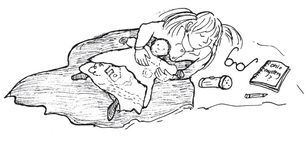
“Someone loved her a lot,” Meg thought to herself. “I wish she could tell us her story. I have a hunch that she's the Ohio mystery artifact. Maybe she traveled on the Underground Railroad.”
Meg fell asleep with the doll next to her, wondering what the doll's name might have been and imagining the doll's owner. “She must have been so frightened,” thought Meg as she drifted off to sleep.
Which artifact do you think is involved in with the Ohio mystery? Why?
The next morning, they pulled up in front of the Quaker Meeting House.
“It's a beautiful building,” remarked Gramps. “So peaceful and plain. The Quakers often worship in silence.”
The caretaker invited them inside and explained how the Quakers helped the runaway slaves.
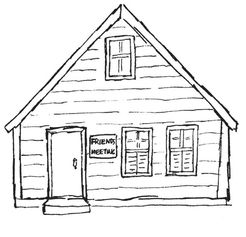
“The password was âa friend with a friend',” he whispered. “They hid the slaves in their houses, barns, and businesses. Then they secretly moved them hidden in carriages and wagons from station to station.”
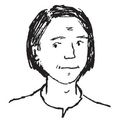
Then he showed them a map of sites in Ohio that were possible stops on the Underground Railroad.
“We're on the right track, Meg-O,” Peter said, nudging her. “I see a clue in Ashtabula.”
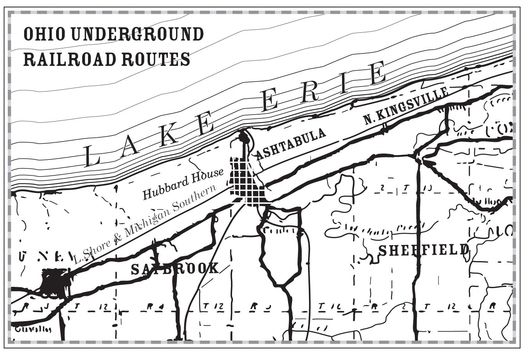
Do you see a clue on the map?
“Look!” exclaimed Meg, pointing at the map. “In Ashtabula there's a place called Hubbard House. It was a station on the Underground Railroad. Maybe it has something to do with the mystery.”
That afternoon they drove along the Ohio River north toward Ashtabula. They had picked up some books on the Underground Railroad at a local bookstore, and Meg was intently reading the stories about the escapes. Many were horrifying and sad, but all were stories of courage and hope that the runaways would make it to freedom.
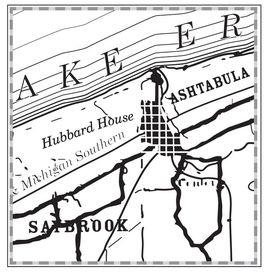
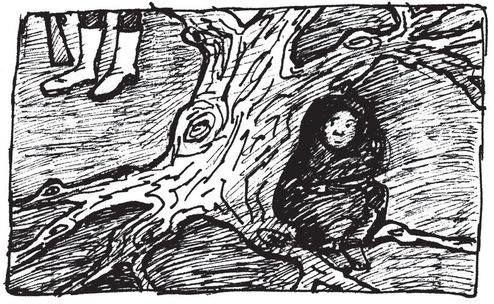
After a while she just stared out the window and wondered what it must have been like to run through the woods and hide along the banks of a river with little protection or food or shelter.
Peter had been reading about the Underground Railroad too.
“I think I know who âMother H' is!” Peter declared, interrupting Meg's thoughts.
“Who?” asked Meg.
Who do you think Mother H is?
“
Mother H
means Mother Harriet â Harriet Tubman,” said Peter. “She was an escaped slave and one of the greatest conductors of the Underground Railroad.”
“It's a good hunch,” Meg said. “But didn't Harriet Tubman go by a different code name?”
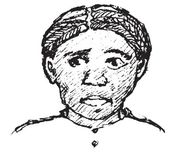
Do you know what Harriet Tubman was called?
Peter scanned through his book on Harriet Tubman. “You're right. Harriet Tubman was called âMoses' because she worked so hard to free her people. She made nineteen dangerous trips back
Do you know what Harriet Tubman was called?
and forth to the South to free slaves.
Meg leaned over and grabbed the old doll from the trunk. For the first time, she noticed a primitive scene sewn onto the petticoat.
“Look!” she shouted. “There's a house and a lake, and a river. The building looks like a church without a steeple, and there's a yellow house with two chimneys and some big trees.”

Then she felt something hard and lumpy sewn into the hidden pocket on the dress. She carefully pulled apart the tiny stitches.
“It's an old dried-up nut of some kind,” said Meg as she showed it to Peter and Gramps.

What could these latest clues mean? To whom do you think the doll belonged?
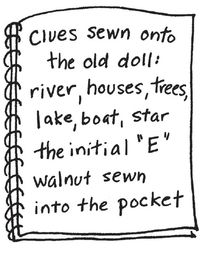
“Why, it's a walnut. An old shriveled up one, but that's what it is. My neighbor had a walnut tree in his yard. We collected them when we were kids,” Gramps told them.
